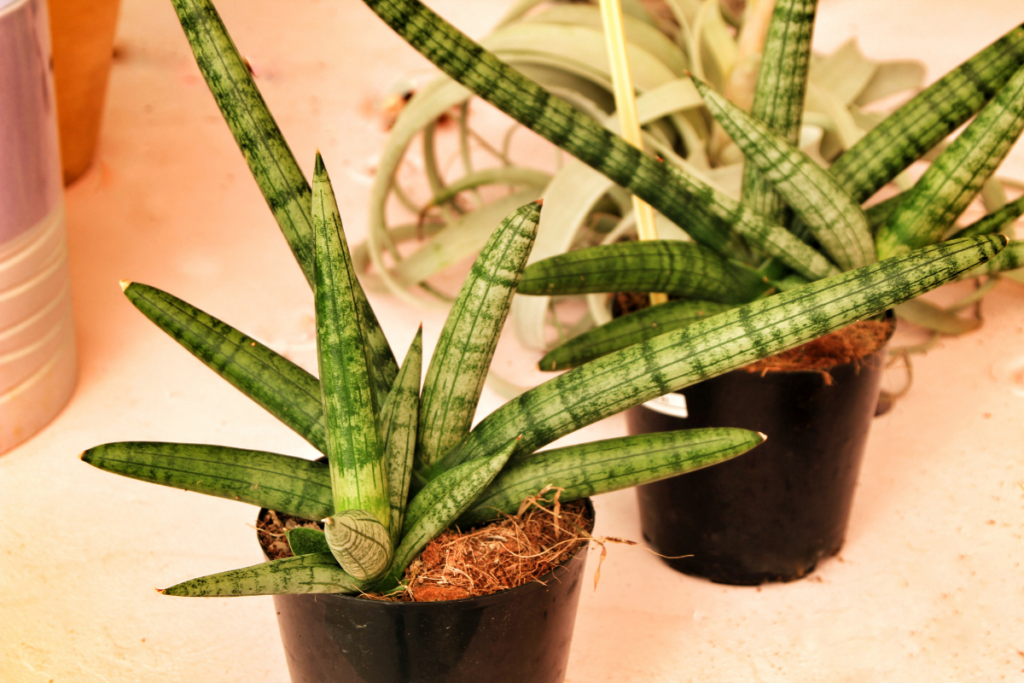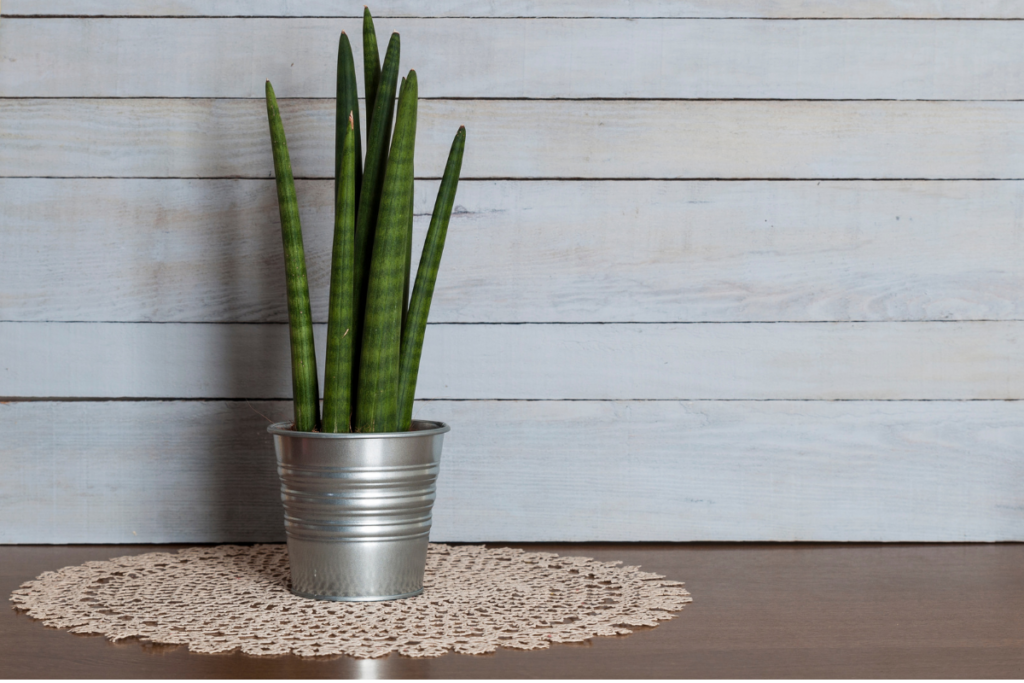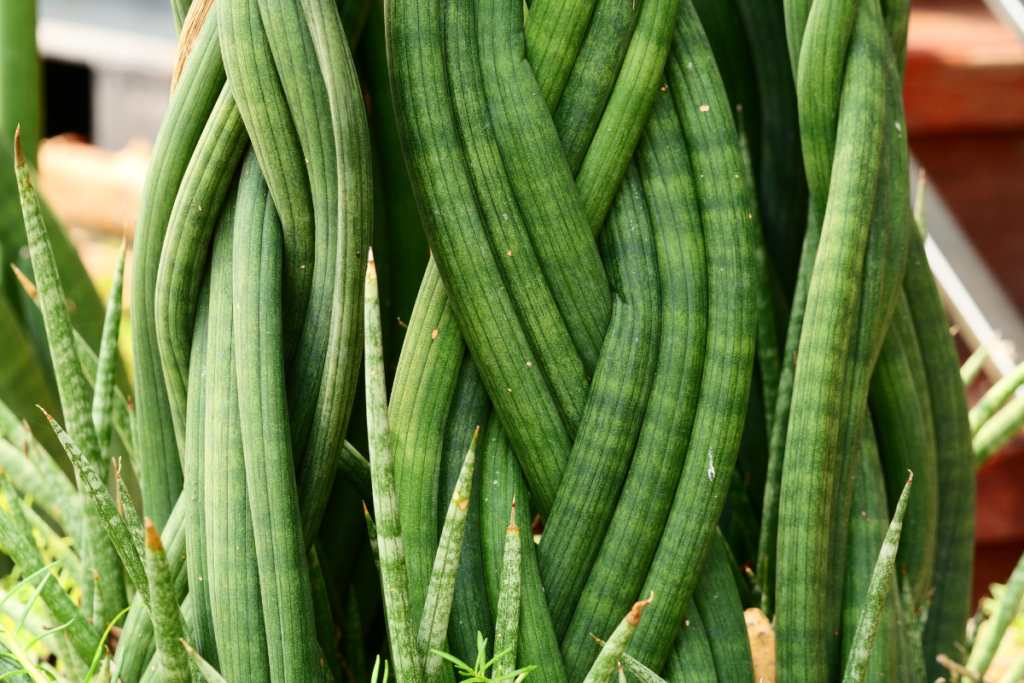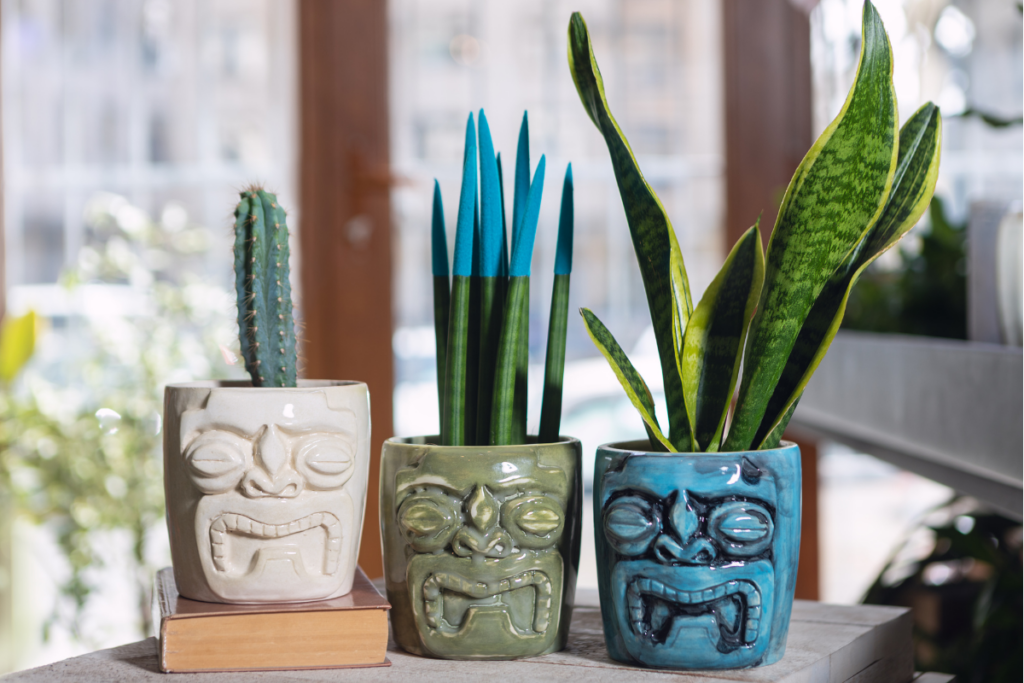It is with no doubt that a Sansevieria plant is the ideal choice if you’re new to plant ownership or want a houseplant that requires little maintenance. Among the many varieties and species of Sansevieria available, Sansevieria cylindrica, also known as Dracaena angolensis or African spear plant, is one of the all-time favorite house plants due to how simple yet attractive and tolerant they are in a range of environments.

The optimal light for Sansevieria cylindrica is bright indirect light, and best thrives in ideal watering of every two to three weeks. The temperature range good for their growth is 68 to 85 degrees Fahrenheit. Succulent and cactus soil should be provided as their potting soil, along with some perlite and pumice. Moreover, there should be about 40% humidity. In the spring and summer, fertilize your indoor plants no more than twice, and avoid fertilizing in the fall and winter.
Let’s take a detailed look at the care and maintenance requirements of this lovely Snake Plant variety. We will also give you important growing tips that you will surely need if you bring this plant to your own gardens.
Sansevieria Cylindrica Profile

General Information
The Sansevieria cylindrica, commonly called the African Spear Plant, is a kind of evergreen perennial succulent that is native to Angola. They frequently form thick stands in the wild and are spread by underground rhizomes. These plants are excellent for beginners since they are adaptable and resilient to neglect.
Sansevieria cylindrica is distinguished by its cylinder-shaped leaves. That is reflected in one of its popular names, the “cylindrical snake plant”. These smooth, tubular leaves have a dark green tint with green-grey variegation on some of them.
Sansevieria boncel, sometimes referred to as spear orchid or skyline spear and having plump, short, cylindrical leaves, is another stunning variant of the Sansevieria cylindrica.
The plant is commonly called the African Spear, Cylindrical Snake Plant, Spear Sansevieria, Saint Barbara Sword, and Elephant’s Toothpick.
Since the recategorization of the genus Sansevieria to Dracaena, Sansevieria cylindrica is now just a synonym for Dracaena angolensis.
Etymology
The genus name Sansevieria was given in honor of the Italian scientist and inventor Raimondo di Sangro, Prince of San Severo. However, Vincenzo Petagna gave the genus its original name, Sanseverinia, in honor of his patron Pietro Antonio Sanseverino, Count of Chiaromonte, in whose Petagna garden had seen the plant.
The species epithet term cylindrica refers to its distinctive cylindrical stems.
Flowering
The Cylindrical Snake Plants are flowering plants. Even though they are seldom seen in cultivation, the flowers that do occur are typically cream-white in color and have a light aroma. They usually bloom during summer or fall.
Season Of Interest And Purchasing
Due to its uniqueness, collectors treasure and admire this plant. If you ever have this plant, spring is the optimum time to reproduce it because that is when the parent plant reaches its full, mature size.
The optimum time to buy it is from early spring to late summer, when robust growth is taking place.
A braided Sansevieria cylindrica plant is frequently sold in the market. However, leaf braiding is completely a matter of taste.
Growth
Sansevieria cylindrica grows at a slow to moderate rate. They reproduce through the production of rhizomes, which are subterranean stems that show new growth. They develop more quickly in brighter conditions and more slowly in darker conditions.
Typically planted as indoor plants, this species of Snake Plants may grow from 8 inches to 7 feet tall and 3 centimeters in diameter.
Sansevieria Cylindrica Overview
| Scientific name | Dracaena angolensis |
| Common names | African Spear, Elephant’s Toothpick, Cylindrical Snake Plant, Spear Sansevieria, Saint Barbara Sword |
| Family | Asparagaceae |
| Growth Habit | Succulent Shrub |
| Height and Spread | up to 7 feet in height, and 3 cm in diameter |
| Classification based on life cycle | Perennial |
| Origin and Distribution | Native to Angola |
| Climate Zone | Generally mild climate |
| USDA Plant Hardiness Zone | USDA Zone 10-11 |
| Color | Gray green leaves with subtle stripes |
Care Tips

Light Requirement
These Sansevieria plants can survive certain low light levels, but they prefer bright filtered light and occasional full sunlight. While they will enjoy the early light outside, they should be shielded from the intense afternoon heat. They prefer windows with a sunny northward view indoors.
Both too much and too little light might result in poor leaf development and the edging of the leaves turning yellow.
Read more about the light requirements of Snake Plants.
Temperature Requirement
You’re not obligated to keep your Sansevieria Cylindrica inside a specific temperature range, since they can endure a range of temperatures in our houses. Keep in mind that your Sansevieria cylindrica care will be appropriate when you also feel personally at ease in your home.
Although, Sansevieria cylindrica prefers temperatures between 68 and 85 degrees Fahrenheit. Snake plants thrive in warm climates and suffer when temperatures drop below 50 degrees Fahrenheit. More so, this plant should be placed away from drafts.
Additionally, this plant cannot withstand freezing, so keep them away from vents and heating or cooling equipment.
Water Requirement
African spear plants can endure extended droughts. Furthermore, roots can decay if they are kept in wet or moist soil for an extended period of time. Therefore, let the soil dry in between waterings, and then thoroughly water the plant.
It’s usually sufficient to water once a week to twice a week. If your plant is being grown in a container, make sure to drain any extra water that accumulates in the saucer via the drainage holes.
In the winter season, put a bit longer time in between waterings than you did in the growth season. Watering should be sufficient around once a month during this time. This is because the plant enters a dormant state during the colder winter months when it ceases to absorb nutrients and water. Also, the roots will rot if you leave your Sansevieria plant in water for too long.
The succulent Sansevieria stores water in its leaves; hence, overwatering your plant is actually a serious offense. If you overwater your attractive Snake Plant, it might eventually succumb to root rot and perish.
Read more information on Snake Plant water requirements.
Humidity Requirement
In general, the Snake Plants prefer a room humidity range of 40% to 50%. In the confines of an indoor environment, more humidity is not necessary. Additional humidity is also unnecessary since the soil requires time to dry out between waterings, which is another reason.
Even the average indoor humidity is enough for these plants. However, due to its hardiness and adaptability, this plant may easily acclimate to its environment.
Soil Requirement
No specific nutrients are required for Sansevieria cylindrica maintenance. Sansevieria Cylindricas may survive in pH ranges between 4.5 and 8.5, with 5.5 to 7.5 being optimum.
It is advisable to use well-draining, loose soil to avoid soggy soil and eventual root rot. To achieve this, pick potting soil with a little peat in them. Peat works well in most circumstances, although it frequently packs down firmly and may not drain or rehydrate well.
What could work best is a 1:1 mixture of potting soil and a succulent and cactus mix. If the mixture looks too dense, you may add a few handfuls of sandy soil, perlite, or pumice to improve aeration and soil drainage. Do the same if the pot has only a few drainage holes,
Learn more vital details regarding Sansevierias’ soil requirements.
Fertilizer Requirement
The Sansevieria plant grows gradually and slowly. As a result, fertilizing should be done only throughout the spring and summer growing season. Your plant requires fertilizer up to twice a year. Fertilizers made for different cactus, and succulent species will work best for your African Spear.
Keep in mind not to overfeed your Spear Sansevieria. Additionally, remember that you shouldn’t fertilize your plant throughout the winter.
Space Requirement
Despite its modest size, the Snake Plant is a lovely and intriguing plant. There are many different sizes of Sansevierias, but the African Spear fits and grows in a little space.
RELATED: 21 Types of Sansevieria – Indestructible, Exotic, and Elegant Air Purifiers
Growing And Planting Tips

Propagation
To propagate Sansevieria cylindrica plants, you can do it by root division, taking leaf cuttings, or air-layering from the mother plant. However, of all of them, root division is the simplest method for spreading snake plants.
Propagation Via Root Division
If you’re concerned about damaging any leaves, you can split the roots instead of taking leaf cuttings from mature plants. Remove the plant from the container after clearing away the soil from it. Water can be used to wash the soil around the roots.
Then, using scissors or pruning shears, carefully cut the roots apart. Avoid damaging the roots when doing this. Additionally, you want to get rid of any unhealthy foliage and damaged roots.
Plant each plant part in a new container with the proper potting mix, and then let it grow in bright, indirect light.
Propagation Via Air Layering
By using this method, you’ll hold off on taking cuttings until the node has roots. Pruning shears, plastic wrap, and sphagnum moss are needed. Rooting hormone is an optional component.
Find the node on the stem that comes from a healthy leaf. Make an incision that is 1 inch deep and leave a little wound. Apply some rooting hormone to the cut. Next, put sphagnum moss all around the severed stem. Keep in mind that you should wet the moss before doing this.
To hold the moss in place, use plastic wrap. There should be some room left open for watering and airflow. The damaged area is tricked into thinking it is buried by this procedure.
Once you notice roots emerging from the incisions, you can tell this cutting apart from the parent plant. After that, place the clipping in soil or water. New leaves will eventually sprout on snake plants after a week or so.
Propagation Via Leaf Cuttings
Look for an uneven area or bumpy spots on a healthy leaf on your plant. These lumps will grow additional roots once they are propagated. Next, cut the leaf directly below the node using a pair of sterile scissors.
After that, choose whether you want to cultivate it in soil or water. The process of water propagation is intriguing since it allows for the observation of root development. To achieve this, fill a glass vase with new water. Just immerse the cutting in water, being sure to submerge the node. A teaspoon of rooting hormone can be added if you want to hasten growth.
Put the vase somewhere bright, and change the water in it once a week. Then, patiently wait for the roots to form.
The best time to propagate is in the spring because roots expand more quickly in the summer and less rapidly in the winter. After the roots have grown to a length of 1 inch, plant the new Snake Plant in the soil.
Pruning
Your snake plant doesn’t require too much pruning. This may be a perfect thing to do, though, if you wish to change the height of your plant or get rid of a damaged leaf. Cut the troublesome leaf as near to the ground as you are able to.
If the height of your plant is becoming an issue, remove the highest leaves by cutting them from the base. The effect will be a decrease in the height of the plant.
Additionally, your plant’s health will increase if you remove any damaged leaves. This occurs because your plant is not forced to waste nutrients on damaged leaves that are ineffective in absorbing light. Use a clean blade to cut the damaged leaf close to the soil line and remove it to do this.
Potting And Repotting
Repotting is advised every two to six years, depending on the growth rate of the plant.
The plant will commonly literally burst out of its present container when it’s time to repot. This way, your plant attempts to notify you that it requires more room. Examine your plant every three to four years if you don’t want to wait until the pot cracks. Move the plant to a newer, larger pot if it appears that the roots are producing a root ball because they are too closely spaced.
You carefully take the plant out of its container and repot it. Repot the plant after that in a bigger container with extra potting soil. Since your plant needs time to rest during the cooler seasons, it is advisable to do this during the warmer months. Repotting snake plants in the winter may stress the plant and result in more problems.
Learn more about how to properly pot and repot snake plants.
Sansevieria Cylindrica Care
| Light | Bright indirect light |
| Temperature | Intermediate to warm, 68-85 degrees Fahrenheit |
| Water | Once a week, increased in summer, decreased in winter |
| Soil | Airy, well-draining soil; not too loose |
| Fertilization | Regular household fertilizer, once a month |
| Space | Substantial amount of space to spread |
| Propagation | Via root division, air-layering, and leaf cuttings |
| Blooming | Rarely blooms, enough sunlight and maturity needed |
| Pruning | Not required |
| Potting | Regular potting mix, cactus potting soil and succulent mix |
Problems And Troubleshooting

Overwatering
Overwatering is the primary reason for this plant’s death. Yellow leaves, stunted growth, and drooping foliage are some signs that a plant is not getting the right amount of water. Check the soil with your finger once a week to make sure it isn’t being overwatered, and wait to add more water until the top half is totally dry.
Due to their dislike of sitting on damp ground, you must be careful not to overwater it. This may just require weekly watering, depending on your climate. Water only the top of the plant, being sure to fully cover the surface.
Underwatering
Watering is among the most important aspects of caring for snake plants. You can see right away whether your plant needs more water. As an illustration, the amount of browning and dryness are inversely associated, and the leaf’s tips will turn brown. Then, the brown tips dry out and become crisp. The damaged leaf separates off the plant eventually.
Unfortunately, there is no saving the dead leaves. However, the problem may be avoided from getting worse by restoring the water levels to normal.
Using the well-known finger test, it would be easy to pinpoint the problem. For example, if the soil seems too dry, water it right away. Inversely, if the soil is still moist, then delay watering.
Nutrient Deficiency
Yellowing of the foliage and pale new leaves are typical signs of nutritional inadequacies in snake plants, such as calcium and magnesium deficits.
Feed indoor snake plants using a balanced liquid fertilizer that contains nutrients to promote a healthy plant. You may also buy nutrient-rich, loamy wet, well-draining soil with a pH range of 5.0 to 6.0.
Flowering Problems
Expect no blossoms if you cultivate a Snake Plant indoors. Although unlikely, it is possible for plants to bloom outside.
However, if you’re fortunate and perfectly match its natural surroundings, especially the light requirements, you could get a glimpse of its blossom. Make sure your plant receives the best care and essentials in order to observe flowering.
Yellowing And Drooping Leaves
Your plant is receiving too much direct sunlight if its leaves are becoming yellow or otherwise discolored. You could relocate it somewhere else where it won’t get as much direct light or where sheer curtains won’t create shadows on it.
Drooping may be brought on by either too little or too much water. Make the appropriate adjustments to your watering schedule to address this, and always check the soil before watering your Spear Snake Plant.
Learn more about snake plant leaves that are yellowing.
Pests
Though it happens extremely infrequently, snake plants can nevertheless get infected with pests. The most likely culprit if you have a pest issue is a mealybug, vine weevils, or spider mite infestation.
Spraying your plants with neem oil or insecticidal soap can do wonders. Any insects that come in touch with it die from suffocation. An alternative is to use a cotton ball or Q-tip dipped in rubbing alcohol. Each leaf should be soaked in the alcohol before being dried with a cloth. In no time at all, your snake plant will be pest-free!
Dust your snake plant to keep insects away. The leaves should be routinely washed with a moist cloth to deter pests.
Diseases
Snake plants are resilient plants. Your plant might suffer negative effects from some bacterial, fungal, and nematode diseases. However, none ought to significantly complicate your plant if you take preemptive measures.
Sansevieria Cylindrica Pests And Diseases
| Common Pests/Diseases | Symptoms | Treatment and Prevention |
Common diseases include stem rot, crown rot, root rot, fungal diseases, leaf spot, and Xanthomonas infection | Yellow rims around dark brown or black spots on leaves | Do not overwater. Keep the soil dry. Avoid extreme humidity. Proper ventilation is needed around the plant. Remove infected parts of fungal infections to avoid spreading. |
| Common pests include mealybugs, spider mites, aphids, and scales | Visible insects on the surface | Spray plant with warm, soapy water. If infestation is present, use insecticide or neem oil. Use diatomaceous earth. |
Problem With People And Animals
Toxicity
If consumed, the snake plant may be poisonous to both humans and animals. However, the repercussions are generally not severe. This is because all types of snake plants contain a substance called saponins. This unique sticky material coats the leaves. The plant is shielded by saponin against several fungi, insects, and grazing animals.
Stomach discomfort might result from eating snake plant leaves. Additionally, temporary sickness, vomiting, and diarrhea may occur.
Snake Plants Meaning And Symbolism

Snake plants are seen as representations of positivism, purity, and good fortune. Although their sharp leaves may seem a little sinister, they are believed to ward off ill luck and evil spirits. In addition, they are highly prized for their sturdy fibers and air-purifying properties.
The snake plant presents some feng shui symbolism. They shield your area from undesirable influences rather than bringing them inside. As a result, they are frequently regarded as lucky and valued plants.
Furthermore, the snake plant is used in ceremonies by some people in West African nations to ward off the evil eye. The capacity of snake plants to stave off attacks is another reason why people value them.
Despite not being native to Asia, humans have been cultivating snake plants there for more than a century. People in China highly value snake plants for their capacity to offer the eight beneficial qualities. These plants are therefore regarded as priceless houseplants and suitable presents.
The snake plant is valued in Korea as well. When someone starts a new company or moves into a new house, potted snake plants are a common present.
| General Meaning | Positivity, good fortune, purity |
| Symbolism | Good luck, protection from evil, offer 8 beneficial qualities |
RELATED: Growing Snake Plants Outside: Can They Thrive Outdoors? Answers and More!
Landscaping And Gardening Ideas

Due to their tall, linear shape, snake plants provide strong vertical accents when utilized alone, flanking an entryway, or in groupings with other foliage plants.
In addition, they are great plants to move about the house if a dramatic architectural element is required because they can withstand relocation well and don’t have particular lighting requirements.
The Spear Sansevieria is well suited to low-light environments where few other plants will flourish. In addition, they grow slowly and are tiny, making them ideal for terrariums or dish gardens.
Moreover, tall sansevierias placed on a chic plant stand may also be used to spruce up dull corners. These areas make for the best havens for these plants that tolerate shadows.
| What to plant with | Other Aroids, Bird of Paradise, Areca Palms, Fire Spike, Heliconia, Variegated Arboricola, Croton, Chenille Plant, Pentas, Most Tropical Plants |
| What NOT to plant with | Basically nothing |
Frequently Asked Questions
How should my Sansevieria cylindrica be cared for?
By giving your Sansevieria Cylindrica the proper temperature, environment, and water, you can take good care of it. In order to keep the plant continuously happy, you should fertilize it in the spring.
What are the three main types of African spear plants?
The three main varieties of the African Spear include the “Spaghetti”, “Skyline” and, “Patula” Sansevieria cylindrica.
Is Sansevieria cylindrica a succulent?
The Sansevieria cylindrica is a succulent plant. It features upward-pointing, green, fleshy, horizontal leaves. Succulent plants hold water in their leaves and stems, which the African Spear also does.
How frequently should Sansevieria cylindrica be watered?
Once the top 2-3 inches of soil are totally dry to the touch, water no more frequently than every two to three weeks. They are susceptible to overwatering because they are succulent plants.
What distinguishes Sansevieria cylindrica from Sansevieria bacularis?
Despite sharing the same genus Sansevieria and family Asparagaceae, Sansevieria bacularis and Sansevieria cylindrica are not the same plants. In comparison to the Bacularis, the Cylindrica grows more densely and has significantly thicker leaves. Bacularis’s maximum height is also roughly 2 feet shorter (60cm).
Final Thoughts
For a novice, the Sansevieria Cylindrica Plant is gratifying and ideal. There aren’t many requirements for the plant, and it requires little upkeep. In ideal environmental conditions, the plant will be able to reward you with its alluring foliage and light, aromatic flowers.
Editor’s Recommendations
Are Snake Plants Toxic to Dogs?: Here Are the Answers You Need To Know
Are Snake Plants Toxic To Cats? All The Answers You Need and More
Snake Plant: Is It A Succulent? The Answer You Need To Know!







